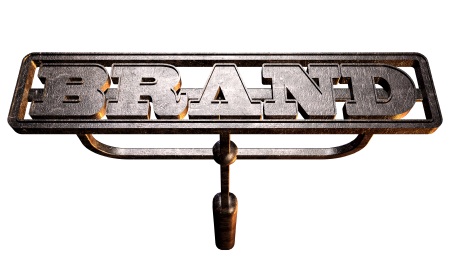Branding Your Collateral Material
 Back in the day, ranchers used to brand their cattle to make sure that their cows could be easily identified in a crowd and protect them from being stolen. Modern day branding is very similar. The goal is to make your material unmistakably yours. From brochures to business cards, flyers to forms, every piece of paper that leaves your office represents you. Never miss an opportunity to imprint your brand where a client or customer might see it.
Back in the day, ranchers used to brand their cattle to make sure that their cows could be easily identified in a crowd and protect them from being stolen. Modern day branding is very similar. The goal is to make your material unmistakably yours. From brochures to business cards, flyers to forms, every piece of paper that leaves your office represents you. Never miss an opportunity to imprint your brand where a client or customer might see it.
If you’re not sure where to start your branding efforts, consider these five ideas, all of which can be easily implemented.
- Logo. Your logo is the starting point and will be used everywhere, so get it right. It needs to work in both large and small formats. It should be recognized in both color or black and white. Whether someone is scrolling through a Facebook feed or passing your booth at a conference, your logo should be immediately recognizable. Unless you happen to have a background in design, we highly recommend hiring a professional for this step of your branding efforts.
- Color Schemes. No matter what type of collateral material you’re creating, pick a simple color scheme and stick with it throughout all your marketing materials. If your website is orange and blue, make sure to use those colors on your card, even if only for the font, or for a simple design element like a vertical line. If you’re just getting started, take the time to carefully consider what colors you want to go with and use several online tools to find colors that work together.
- Tag-line. This short snippet of text should accompany your logo whenever possible. It’s your chance to tell people, in ten words or less, what your organization is all about. Tripepi Smith uses “marketing – technology – public affairs.” Our client Rowland Water District uses “Effective Action for Sustainable Progress.” Another client, Townsend Public Affairs, uses “Politics Navigated.” Ideally you will have a version of your logo that incorporates your tag-line, and a clean version that doesn’t.
- Imagery. If your collateral material is solid text, it’s highly likely that nobody will read it. You will need imagery to break it up and make it more inviting. There is a little more flexibility with imagery – you don’t have to use the exact same photo for every bit of collateral you produce, but using consistent subjects in similar lighting is a form of branding. Consider hiring a professional photographer to do a photo shoot so that you have a similar professional shot of the team. Using the same lighting, get a group shot. If you have products to showcase, make sure they are photographed against a background that works with your color scheme. You can also green-screen your team photos and insert a branded background on each photo.
- Thumbnail. This truncated version of your logo is great for use in tight spots. It is the image in the tab of the internet browser when someone is looking at your website. It can also act as your avatar image on social media channels. Some people even use them as bullet points in PowerPoint presentations. Generally, they need to work in a square format, and must be recognizable in very small size.
The science of branding can be complicated and involve many more nuances, but using these five basic ideas will get you off to a good start.

